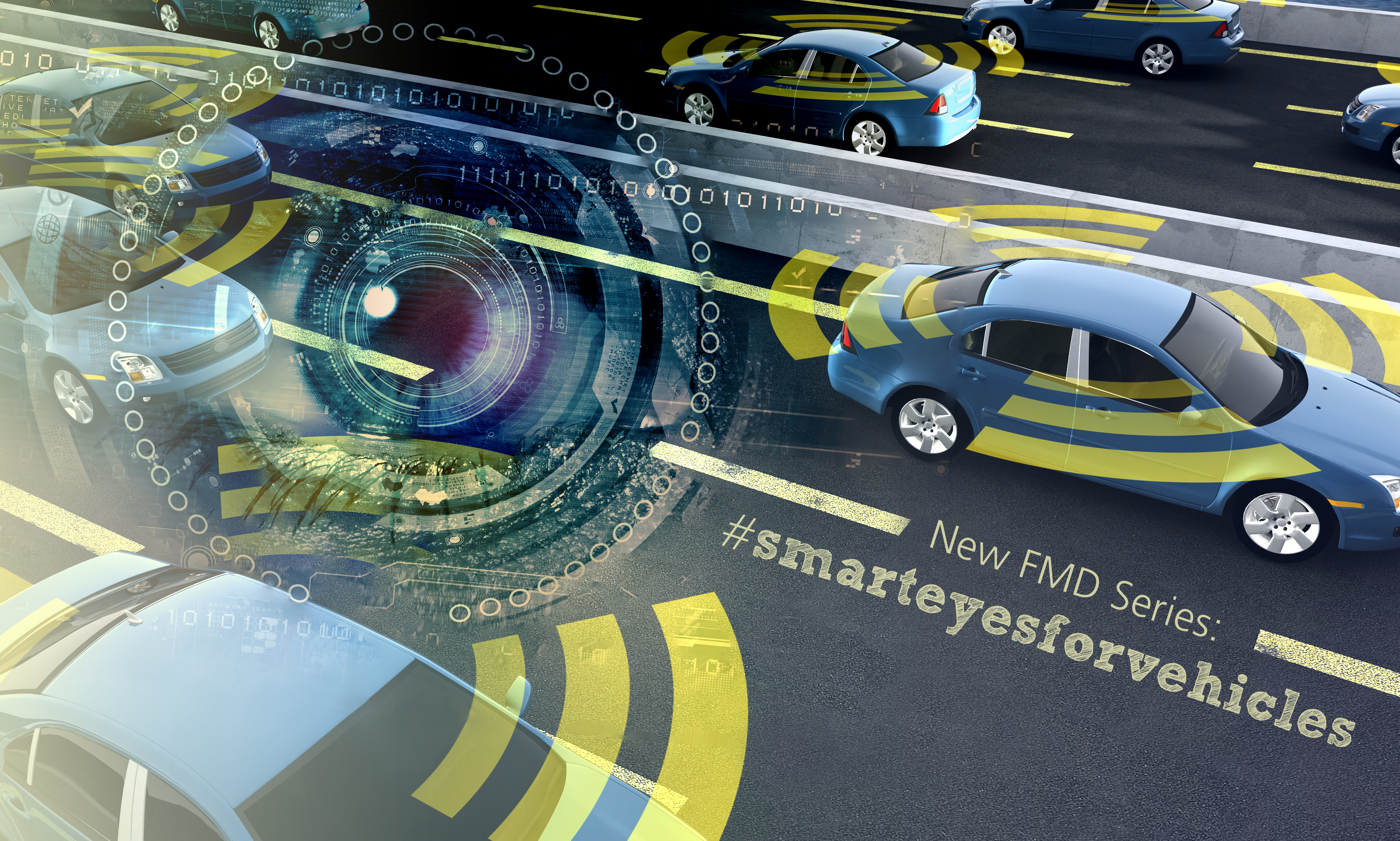Fraunhofer Microelectronics
#smarteyesforvehicles: Farther, more precise, smaller
Whether in traffic, robotics or industry: smart solutions for environment detection systems are in demand. The Research Fab Microelectronics Germany (FMD) significantly contributes to the further development of technologies and thus to increasing the safety of road users or players in the industrial environment.


Mr. Galle, you are the FMD‘s contact person for vehicle environment detection. Which technologies does this term entail?
Vehicle environment detection means technologies around LiDAR, RADAR, sensor data fusion and of course the related integration technologies. It is about multi-sensorial detection of the environment in 360° near and far. This includes the detection of people, the roadway or – in industrial applications – the classification of objects.
What competencies does the FMD have in this area?
The 13 member institutes of the FMD have different special knowledge of the technologies and components, which complement each other in an ideal manner. In the field of LiDAR, for example, this ranges from the various components of a system, such as laser sources, optics, beam guidance equipment or detectors in different wavelength ranges, to intelligent signal processing.
Which projects are currently being carried out within the FMD in this area?
In the large-scale project "miniLIDAR", we are developing components for a miniaturized LiDAR system for robotics together with an industrial partner. Four FMD institutes are involved. Leibniz FBH in Berlin is developing the pulse laser sources. Fraunhofer IPMS in Dresden implements the development of the beam deflection device. Fraunhofer IZM in Berlin is dedicated to the topic of optical phased arrays and Fraunhofer IMS in Duisburg realizes the detector development.
In another project with the startup OQmented we are in the final stages of implementation. Here, the Fraunhofer Institutes ISIT and IMS as well as the Leibniz FBH are developing a Wide-Field-of-View LiDAR demonstrator with a single MEMS mirror working in coordination with a SPAD detector. The demonstrator features a field-of-view of more than 160° at a resolution of 0.1° and has very good sunlight suppression properties.
How do you support customers interested in projects?
We as the FMD are the one-stop shop for our customers for technologies in vehicle environment detection. We put together a consortium of experts, tailored to the technological requirements. This enables us to offer tailor-made solutions. The customer has access to a complementary portfolio of solutions through one contact person.
What technological trends are emerging in this area?
"Farther", "more precise" and "smaller" are keywords we deal with every day. In order to meet these demands on the sensor technology of vehicle environment detection, we are working on solutions on different levels. Compound semiconductors such as InP-based lasers or InGaAs-based detectors could signifiacntly improve the performance of LiDAR systems. However, problems have to be solved in order to meet the cost requirements. Heterointegration is certainly a crucial issue: The combination of the mentioned detectors with silicon-based readout electronics is a solution idea we are addressing.
About the person
Studied industrial engineering and management at the TU Berlin. Worked as a project manager at the Brandenburg Economic Development Agency with a focus on the strategic development of the transport, mobility and logistics clusters as well as ICT, media and creative industries. Since 2018 program manager at the FMD. Strategic development and business development for the topic of vehicle environment detection.
Last modified:
 A cooperation among CEA-Leti, CSEM, Fraunhofer Microelectronics and VTT
A cooperation among CEA-Leti, CSEM, Fraunhofer Microelectronics and VTT